At age 17, Christopher Love had less than a week to go before the start of his senior year in high school.
Then came the diagnosis: T-cell lymphoblastic lymphoma, an aggressive type of cancer.
Now 19, he’s quick to recount the journey that brought him to where he is today—enjoying a new job as a nurse technician at the Spectrum Health Blodgett Hospital emergency department.
The cancer diagnosis in September 2018 changed everything.
Even his career path.
“I first felt that something was wrong that August,” Love said. “No congestion, but I had a dry cough and back pain. I went to urgent care and I was told it was probably pneumonia.”
It wasn’t.
His health didn’t improve, so he made an appointment with his pediatric doctor. She ordered an X-ray on Love’s chest. What she saw prompted her to send Love to the hospital right away.
“There was a mass surrounding my lungs,” Love said.
To this day, he recalls that trip to the emergency department at Spectrum Health Helen DeVos Children’s Hospital in a remarkably calm voice.
He didn’t feel worried, he said.
His parents were on edge, but he felt mostly cool about it.
Nothing really bad happens to a 17-year-old.
Or does it?
“I guess at 17, your mind just doesn’t go there,” he said.
When he arrived at the hospital, a team of specialists surrounded him. They asked questions, performed tests.
That’s when he first met Deanna Mitchell, MD, pediatric oncologist and hematologist.
“When I met Chris, he was having difficulty breathing and he had back and chest pain,” Dr. Mitchell said. “I was also concerned about a recent 17-pound weight loss he reported.”
Dr. Mitchell took a fluid sample from outside of Love’s lungs and sent it to Jennifer Stumph, MD, pathologist and associate medical director of flow cytometry at the Spectrum Health Advanced Technology Laboratories.
Things were moving fast.
Difficult diagnosis
The diagnosis quickly came from the lab.
“We analyzed samples from bone marrow, cerebrospinal fluid and performed flow cytometry,” Dr. Stumph said. “Certain diseases have certain patterns. We detected an abnormal, immature T-cell population.
“Then we put all the puzzle pieces together, determine the stage of the disease and determine how to treat it, how much chemo the patient would need.”
Love had T-cell lymphoblastic lymphoma, or T-LBL.
It’s not a common disease.
Dr. Stumph said she finds it in her lab work perhaps only several times a year, almost always in young males. It is a malignancy of the white blood cells that usually occurs in the lymph nodes.
In Love’s case, the malignancy had caused a mass in his chest.
“It also caused atelectasis in his left lung,” Dr. Mitchell said. “That’s partial lung collapse, as the mass was pressing on Chris’ trachea.”
Doctors admitted Love to the hospital, where he stayed for 11 days to undergo chemotherapy.
“He was stoic about it,” Dr. Mitchell said. She visited her patient daily.
“I wasn’t worried,” Love said. “I was moved to the oncology floor. The team explained their plan of care—there would be five phases of treatment—to me and my parents. I trusted them.”
Beginning treatment
The phases of treatment, Love learned, would take around two years to complete.
It would be mostly outpatient, with the occasional short hospital stay.
“Chris had to make weekly visits to the hospital for chemotherapy and monthly visits for spinal taps,” Dr. Mitchell said. “He’s one of the few teenagers I’ve treated who does those awake.”
“There were different types of chemo and I also took steroids and blood thinners and a few other meds,” Love said.
Soon a CT scan showed the mass in his lungs had nearly disappeared.
“That was exciting,” Love said. “They showed me the scan. Yeah, a real mental boost.”
As calm as Love felt throughout his treatment, he admits anxiety occasionally crept in.
“It was when I was home that I would start to think about everything that could go wrong,” he said. “So I asked for help.”
And he got it.
Doctors referred him to a Spectrum Health psychologist who works with people who have undergone circumstances much like Love’s.
“It definitely helped,” Love said. “I learned coping skills, how to handle the anxiety.”
A new direction
Throughout his treatment, Love kept up with his education.
He graduated high school with excellent grades and enrolled at Grand Rapids Community College in August 2019.
“And then I needed a job to help pay for school,” Love said. “Spectrum Health is near GRCC, so sure, I looked there first.”
He applied for a beginner’s spot in nutrition services.
“In October I was hired—and I started in November 2019,” he said.
Love found himself delivering meals to patients’ rooms, often to the same oncology floor where he had been a patient not so long ago.
He made a point to deliver smiles. He enjoyed the job.
“I love the patient interactions,” he said. “Just a smile could brighten someone’s day—mine, too. I started thinking I wanted to be even more involved in nursing care.”
He changed his college major from mechanical engineering to biomedical engineering. He also applied for a job as a nurse technician, at a position that had opened at the Blodgett Hospital emergency department.
He nailed that interview and started in his new role this past month.
“I’m helping nurses with side jobs, getting the vitals from patients,” Love said. “And I watch over patients who are in distress. I help calm them down.”
Spreading the calm, Love wears a small, lime-green ribbon on his uniform as he works. It signifies non-Hodgkin’s lymphoma.
He doesn’t bring up his story to patients unless they ask.
If they ask, he tells them: I know what it’s like. I’ve been in similar shoes. It gets better.
He’ll finish receiving his chemotherapy treatments in December.
In the meantime, he’ll keep showing up to work in the emergency department—this time, in the role of caregiver.
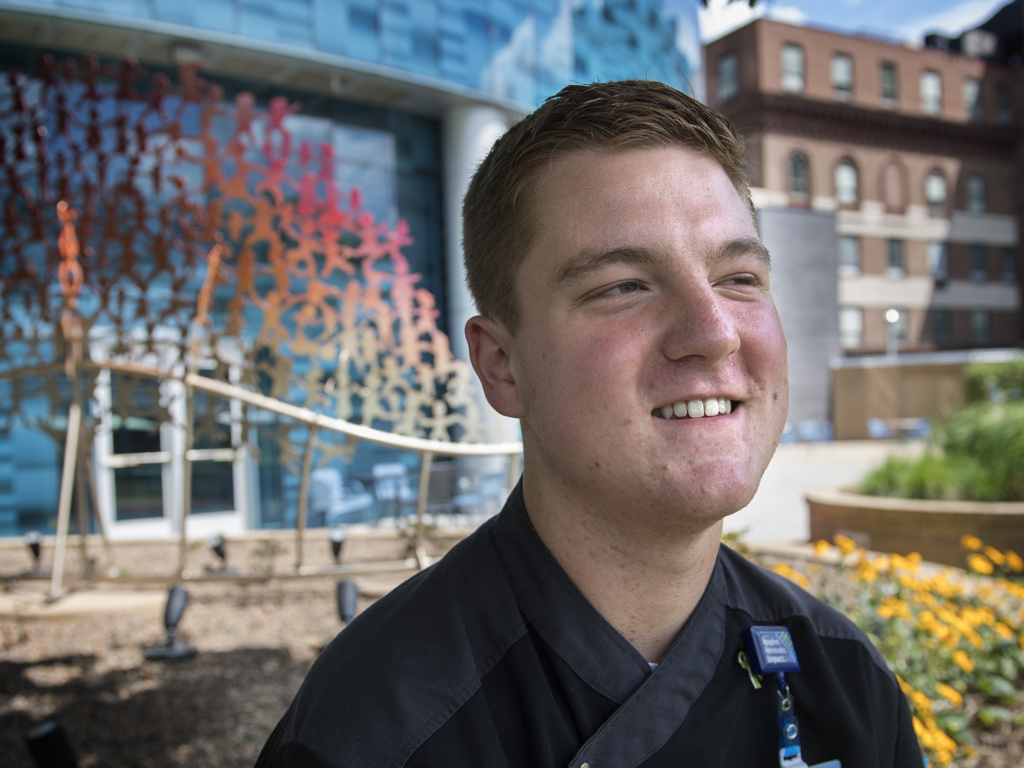
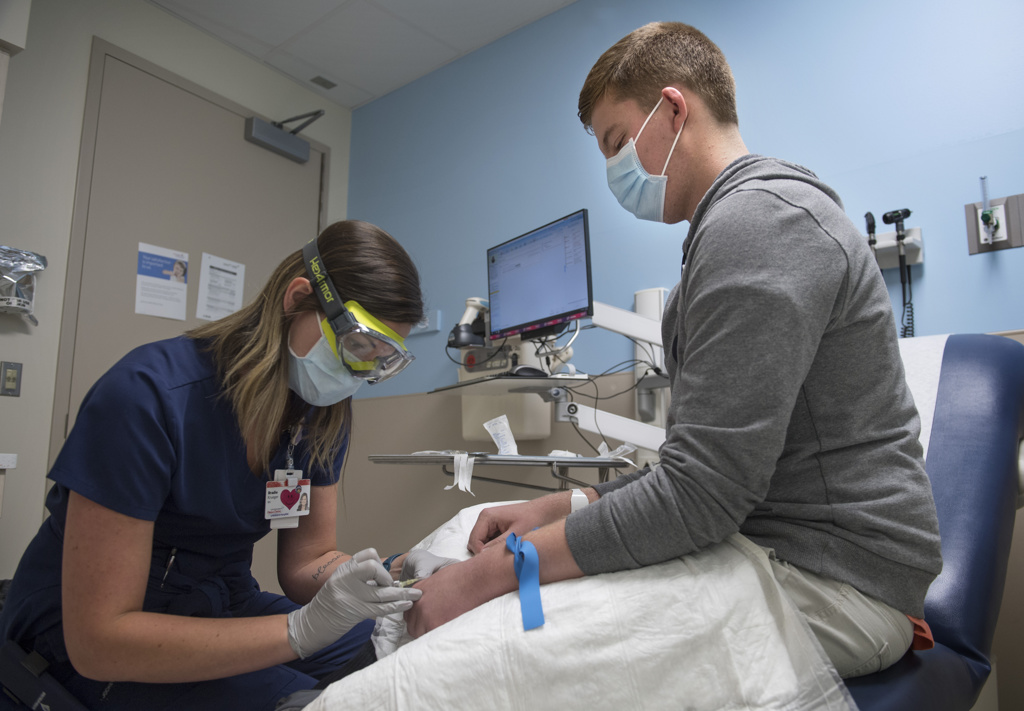
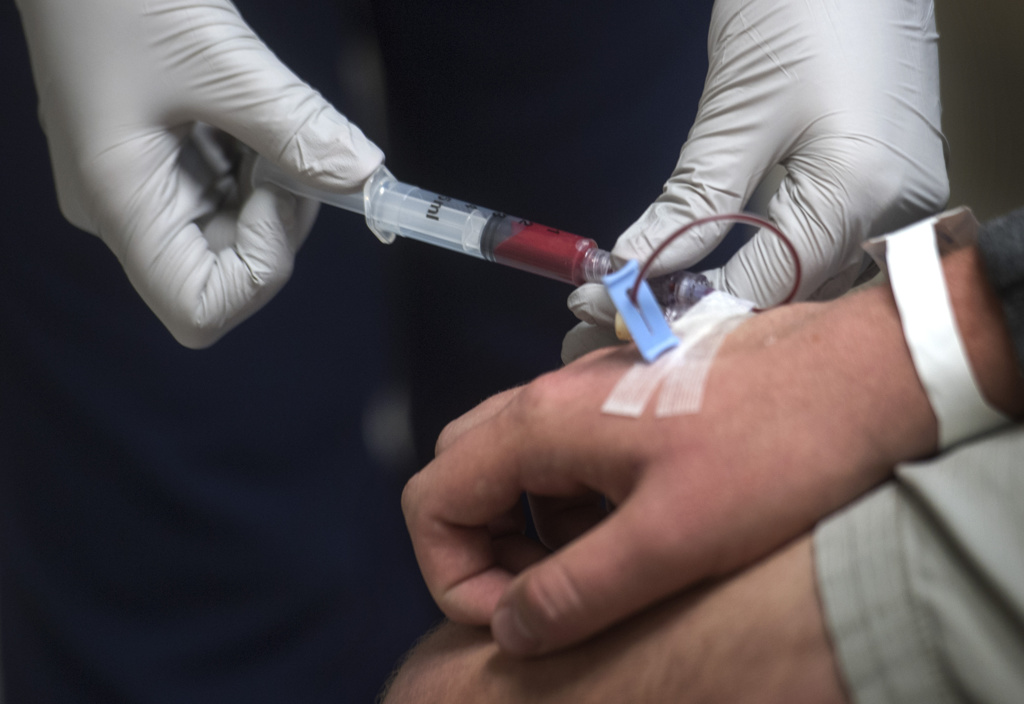
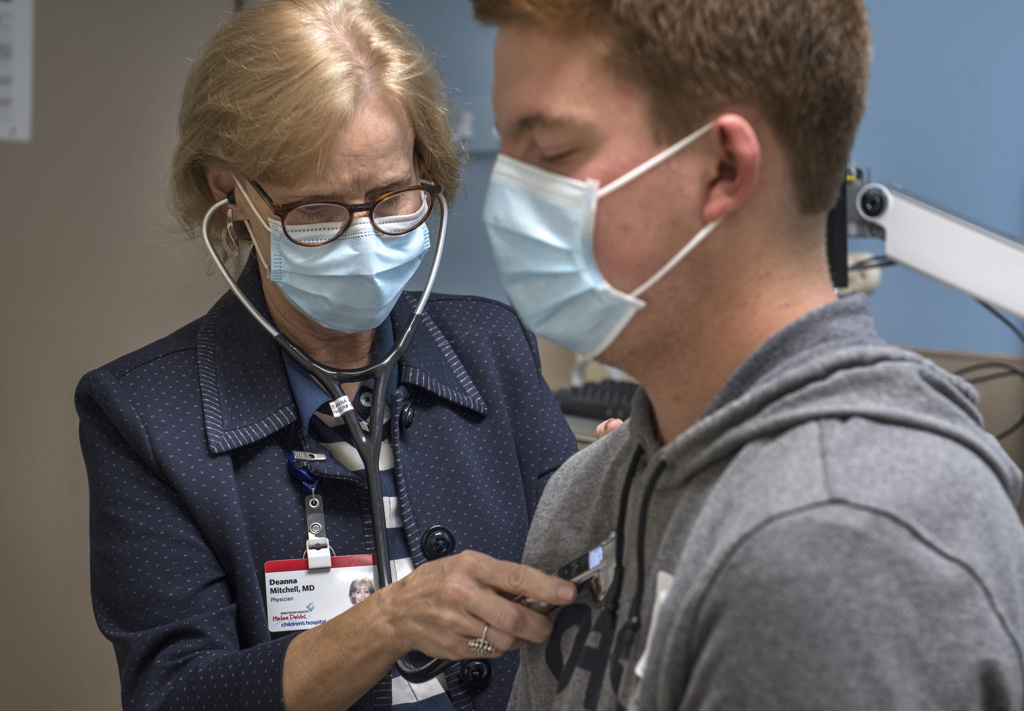

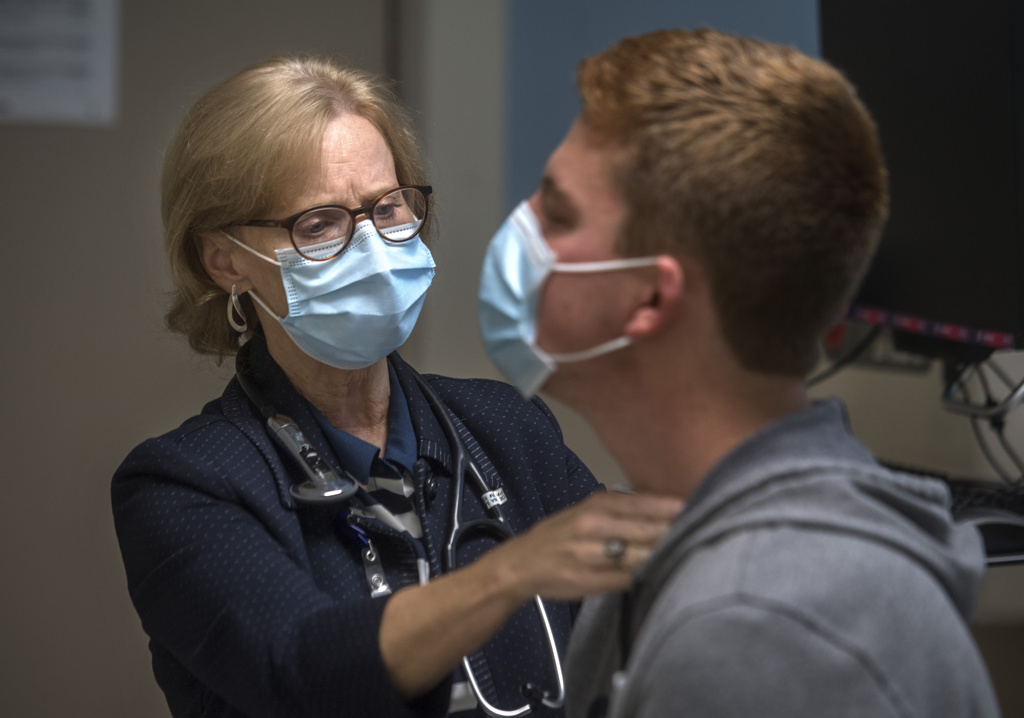
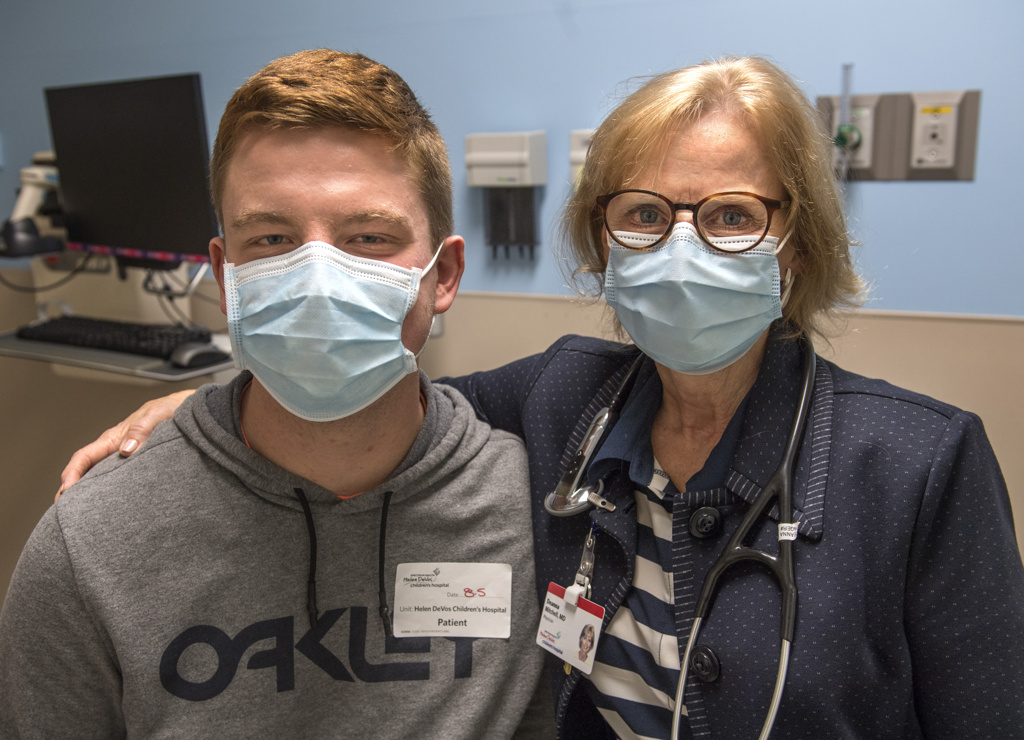
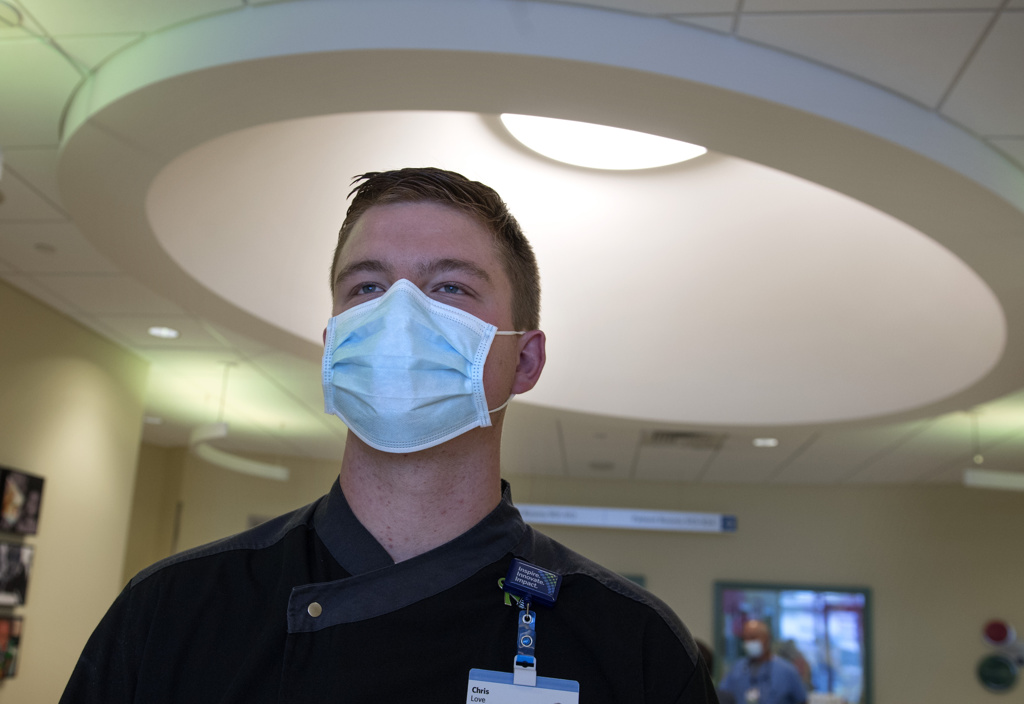
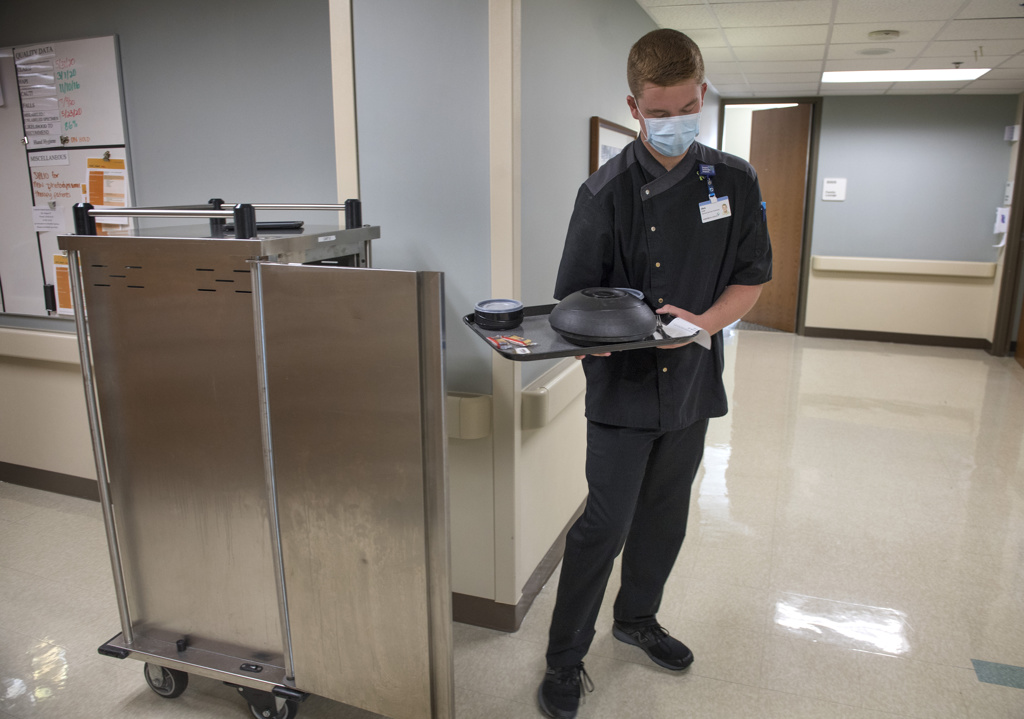
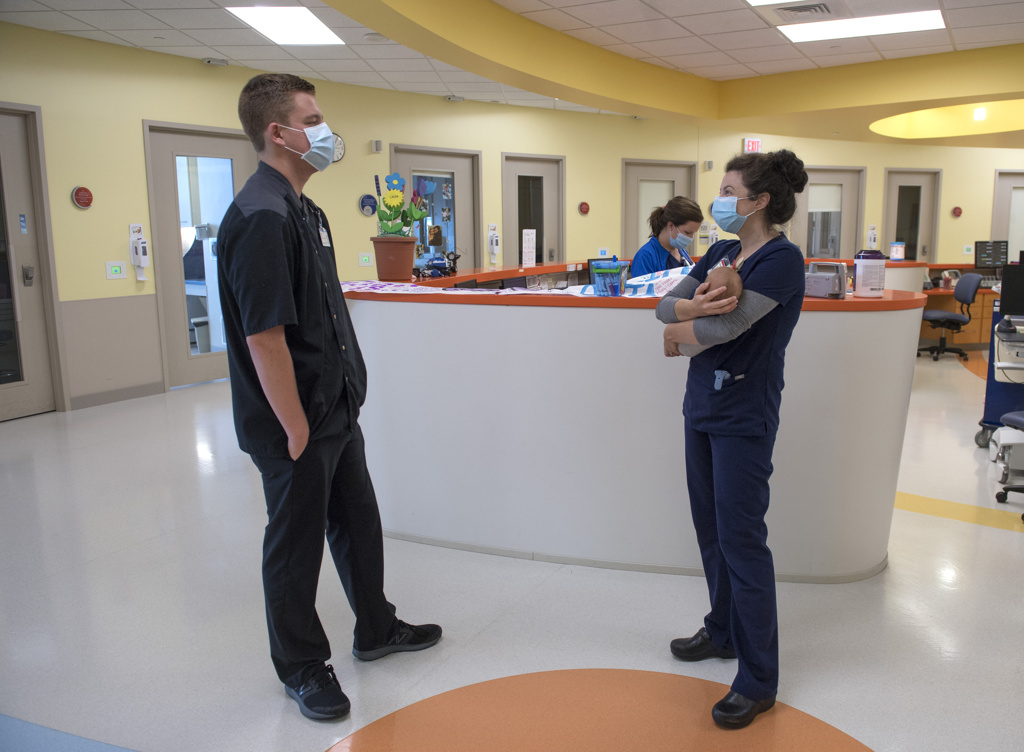


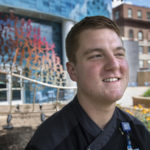
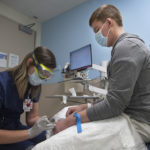
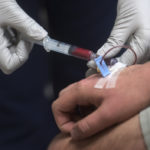
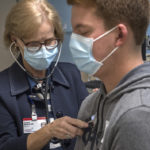

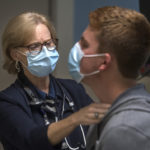
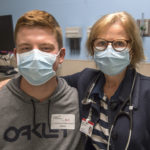






 /a>
/a>
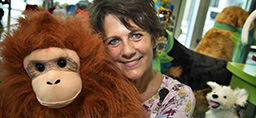 /a>
/a>
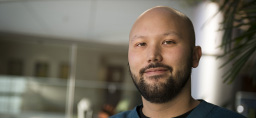 /a>
/a>
The best thing about this article is that it emphasized that Chris is an “unphased” kind of guy. His empathy and understanding of what turmoil patients can face and the need for a kind smile with a listening ear will always be a strong part of his personality.
I count as a hero to me and i will keep him in my daily prayers
So many people complain about the youth of today, I see far more good myself. This young man has/will survive a potential life altering event and he did it with courage, faith and showed great wisdom. Keep marching forward, you are a success already!
I know Chris personally, he is good friends with my son. He is as good as it gets.